This rabokki recipe features instant ramen noodles and chewy rice cakes, all coated in the most delicious sweet and spicy sauce. It’s packed with flavor in each bite and is very easy to make at home. It’s the ultimate quick and delicious comfort food meal for busy weeknights!
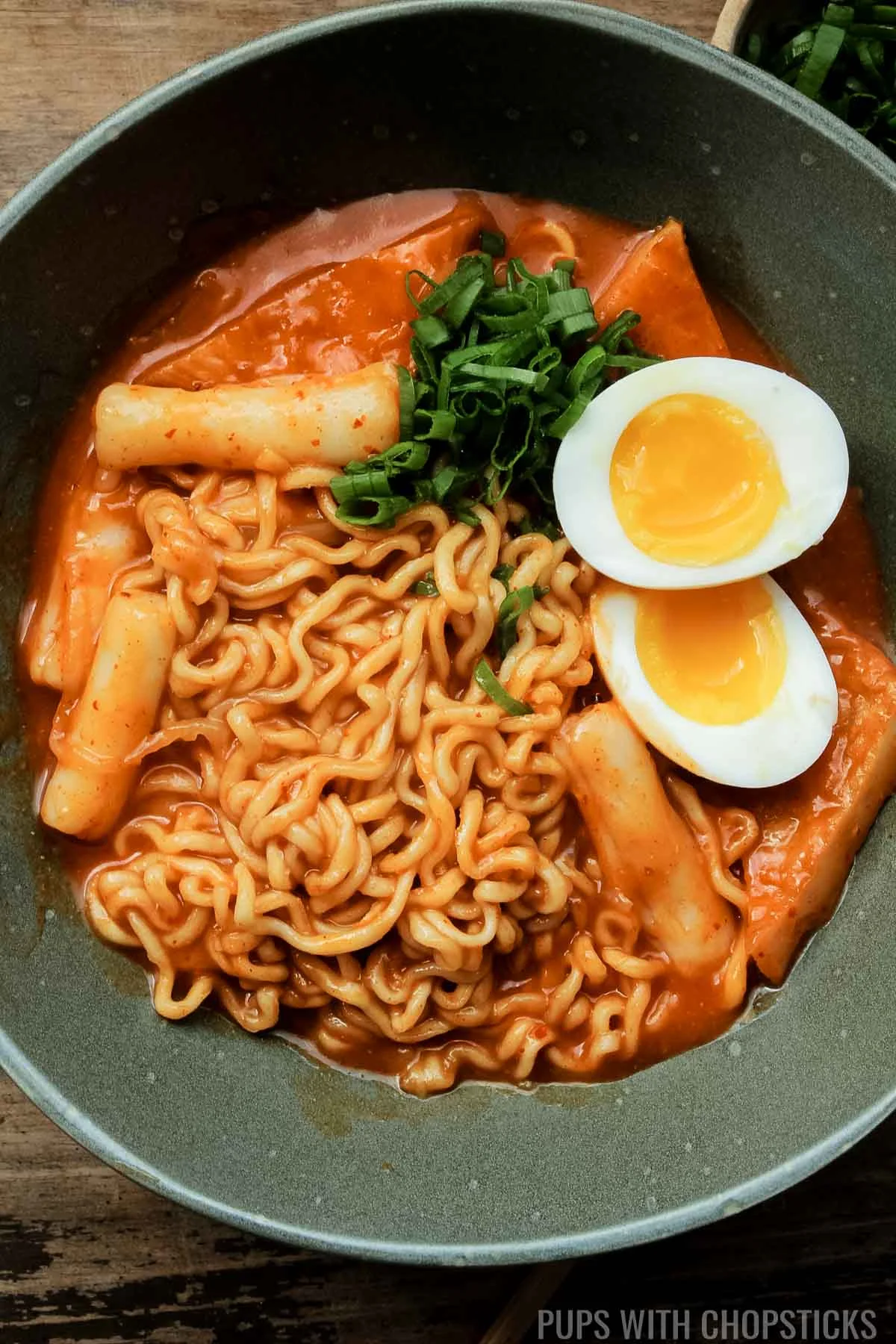
Table of Contents
- What is Rabokki?
- Why You’ll Love This Rabokki Recipe
- Ingredients You’ll Need to Make Rabokki
- How to Make Rabokki (Step by Step)
- Joyce’s Tips For Making the Best Rabokki
- Serving Suggestions
- Recipe Variation Ideas for Rabokki
- Frequently Asked Questions
- How to Store Leftover Rabokki
- Recipes To Use Up Leftover Gochujang
- More Korean Recipes You May Like
- Recipe Card
This delicious rabokki recipe combines chewy rice cakes with thick, chewy instant ramen noodles and the sauce takes everything to the next level! It’s sweet, spicy, and savory all at the same time. The fish cakes and toppings make it even better, and you can add your favorite mix-ins to customize it to your liking.
The best part? It's incredibly easy to make at home, making it a perfect dish for those nights when you want something quick yet satisfying.
Read on to learn exactly how to make this delicious rabokki recipe today!
What is Rabokki?
Rabokki is a popular Korean street food that combines tteokbokki (Korean rice cakes) and ramen noodles. And that’s also how you get the name: ra from ramen, and bokki from tteokbokki!
It's a comforting dish that's packed with flavor, thanks to its spicy gochujang-based sauce and the variety of ingredients that go into it.
This tasty dish is a blend of chewy rice cakes, springy ramen, and other delicious ingredients, all combined in a spicy, sweet, and savory sauce. It’s the perfect snack or light meal that you’ll love!
Making rabokki at home is a great way to bring a bit of Korean street food into your kitchen. Its robust flavor profile, balancing spiciness with a hint of sweetness, is a true crowd pleaser!
So if you’re looking for a tasty dish to enjoy over weekend (or a busy weekday night!) rabokki would be it!
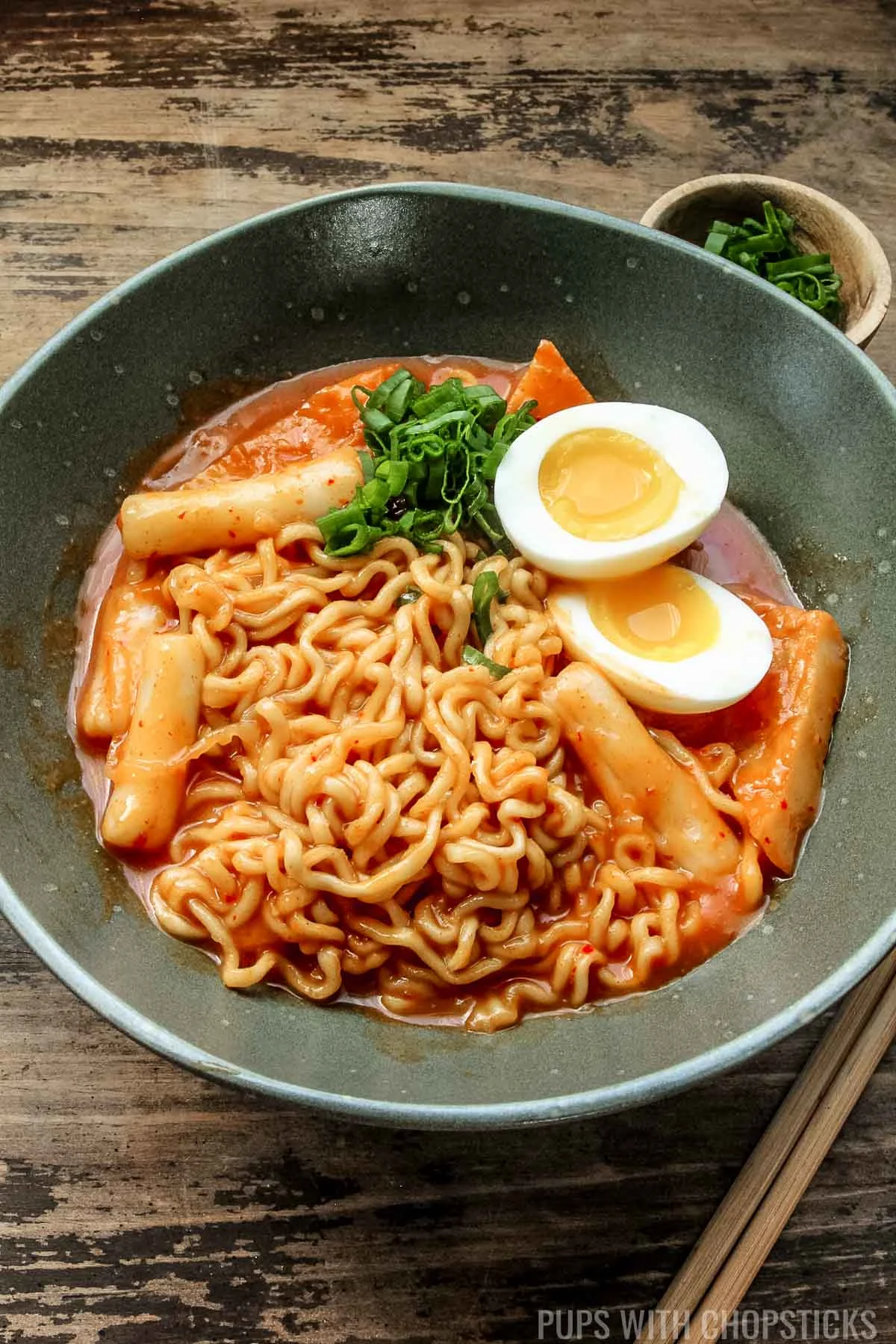
Why You’ll Love This Rabokki Recipe
- Quick and Easy to Make: This rabokki recipe is quick, simple and straightforward! The process is easy to follow, making it a breeze to prepare this dish, even for beginners. Since it's quick, it also makes an excellent weeknight cozy dinner.
- Smoky and Flavorful: I use a combination of instant hondashi granules and bonito flakes for the sauce, so there is an extra smoky flavor as well that doesn't come from the traditional dashi.
- Chewy Textures: Rabokki is filled with delicious textures, from the chewy rice cakes to the springy instant ramen noodles, to the wonderful slurpy sauce.
- Cozy and Comforting: If you love warm, spicy, saucy, cozy bowls of noodles, then this would be your ultimate comfort food.
Ingredients You’ll Need to Make Rabokki
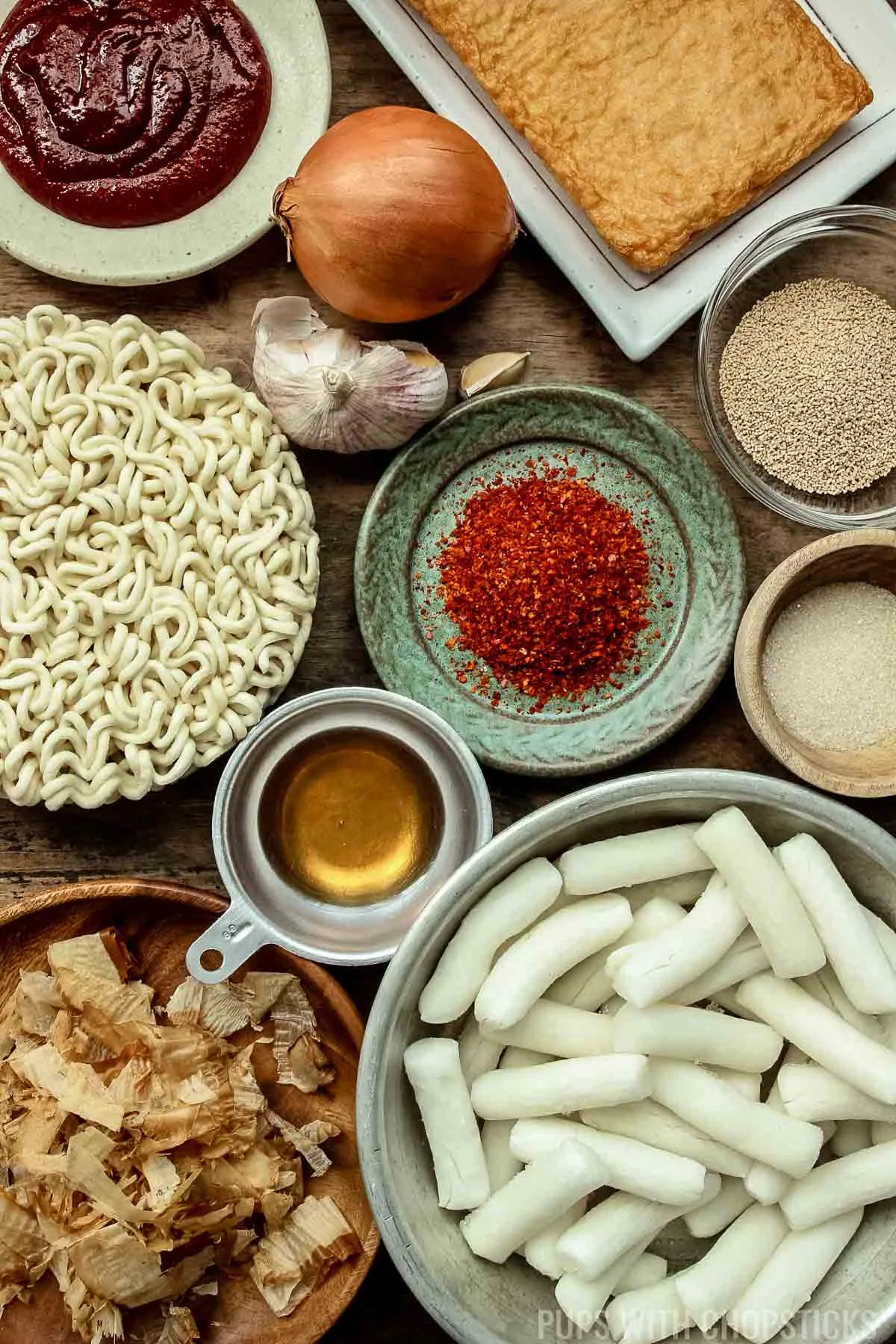
Here's an overview of the specific ingredients for this rabokki recipe. For the exact ingredients and measurements, please scroll to the recipe card below.
- Rice Cakes (garaetteok): These tubular-shaped rice cakes are the star of this dish, providing a unique chewy texture. Remember to not overcook them to maintain their chewiness. If you have any leftovers, you can store them in the freezer in a ziplock bag.
- Instant Ramen: Korean brands (like Nongshim - not endorsed, specifically Shin or Neoguri) make the best rabboki because they haver thick, chewy noodles. Be careful not to overcook these - you want them al dente. They will continue to soak up the sauce and soften after a few minutes.
- Fish Cake: Adds a delicate seafood flavor to the dish. If you can't find it in sheet form, fish balls can be used as a substitute.
- Onion: This finely sliced ingredient adds a hint of sweetness to the dish.
- Sesame Oil: A drizzle of this is added after turning off the heat, giving the dish a lovely nutty aroma and flavor.
- Green Onions: They're used as a garnish, adding a pop of color and a fresh, slightly oniony flavor to the dish. It also cuts into the heaviness of the dish, and I highly recommend it!
- Toasted Sesame Seeds (Optional): These are used as a garnish. They add a subtle nutty flavor and a nice crunch on top.
For the Broth:
- Hondashi Dashi Powder: This ingredient provides a deep, smoky, savory flavor to the broth. You can find this at Asian grocery stores or online and I highly recommend having a small jar in the pantry, because it never goes bad and it can be used in place of a very flavorful and smoky bouillon for broth in a pinch. If you can't find it, you can substitute it with two to three tablespoons of soy sauce.
- Bonito Flakes: These add a smoky flavor to the dish. If you can't find them, you can leave them out, but you'll lose a bit of the smoky flavor. You can find these at an Asian grocery store as well or online.
For the Rabokki Sauce:
- Gochujang (Korean chili paste): This is Korean red pepper paste is the primary source of flavor in your Rabokki. It adds a spicy, slightly sweet flavor and gives the dish its signature red color. You can find this at Asian or Korean grocery stores or online.
- Gochugaru (Korean chili flakes): These chili flakes add another level of spiciness to your dish. You can adjust the quantity depending on how hot you want your Rabokki to be. Make sure you use the course or medium grind and not the fine grind. You can find this at any Asian or Korean grocery store or online as well.
- Sugar: The sugar balances out the heat from the gochujang and gochugaru, providing a sweet undertone to the spicy sauce.
- Garlic: This gives the rabokki sauce an extra garlic flavor.
Additional Add-Ins (Optional):
- Carrots and Cabbage: These add a crunchy texture and a refreshing contrast to the spicy and rich flavors of the dish.
- Cheese: Cheese is optional but highly recommended. It adds a creamy and rich texture, making the dish even more indulgent. Use a slice of American cheese for that gooey, melty richness.
- Eggs: Soft or medium boiled eggs add a rich, creamy element to the rabokki. The yolk mixes in with the sauce, making it even more savory.
- Hotdogs or Leftover meat: You can add protein to your rabokki with hotdogs or any leftover meat. It makes the dish more filling and satisfying.
- Kimchi: Chopped kimchi adds a tangy flavor and a bit of crunch. It's a great way to incorporate some fermented goodness into your dish.
What are Rice Cakes?
Rice cakes are chewy noodles made from sticky rice flour that come in round flat discs or tube shapes. Don't get them confused with the crispy puffed rice cakes that are more like crackers!
Depending on whether they're discs or tubes, rice cakes are usually cooked in different ways, but they're popular in Chinese, Korean, and Japanese food.
The flat round ones (called nian gao in Chinese) are most often stir-fried in Chinese cooking.
On the other hand, the tube-shaped kind (garaetteok in Korean) is way more common in Korean dishes like this one, especially as comfort food with gochujang paste and fish cakes called tteokbokki - a version of which we're making today. The tube ones also tend to get used more in saucy or stewed dishes.
If you want to learn more about where to buy them, and different recipes you can make with them, check out my rice cakes guide.
How to Make Rabokki (Step by Step)
Making this incredible rabokki recipe at home is super easy and will give you great results every single time. Here's how to make it step by step:
Preparing the Ingredients
Prepare the Onion and Fish cakes: Begin by peeling and slicing the onion. Cut the fish cakes into small pieces. Set both aside.
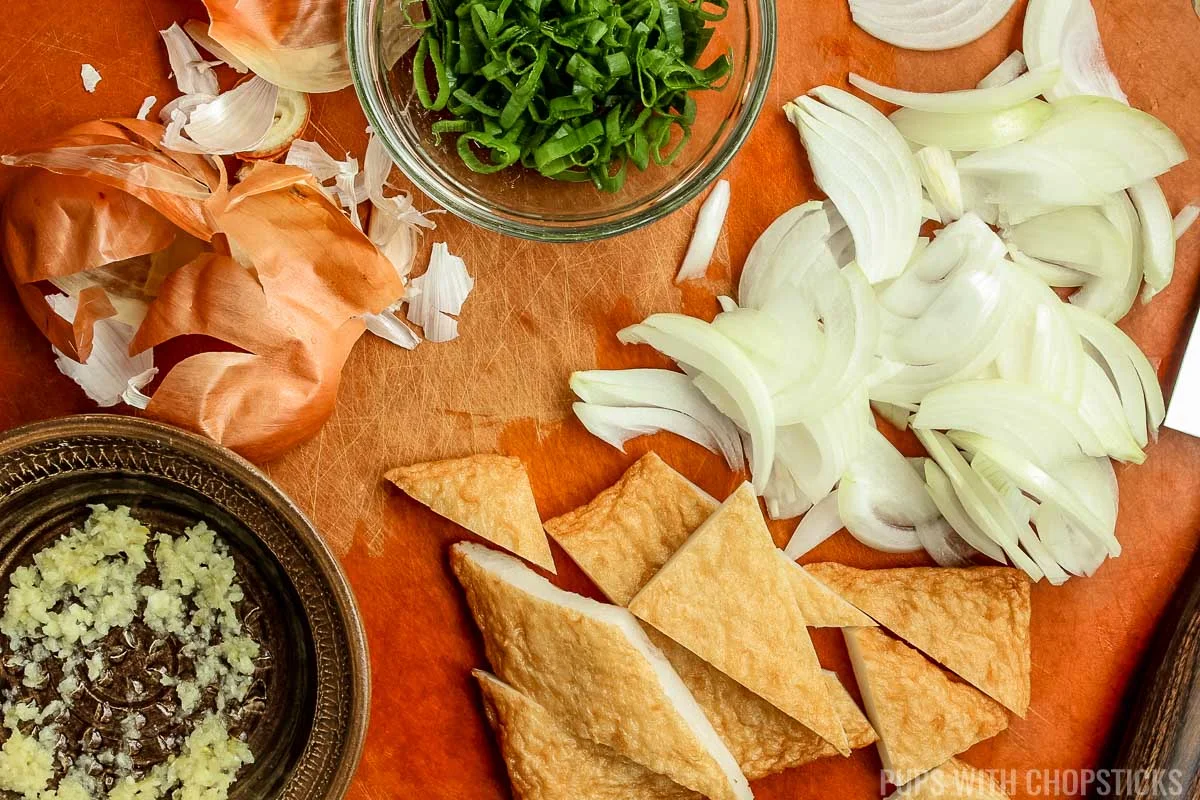
Prepare Green Onions and Add-ins: If you're using green onions as garnish, finely chop them and set aside. Now is also the time to prepare any add-ins (such as grated cheese or boiled eggs).
Making the Rabokki Sauce
Prepare the Garlic: Finely chop or grate the garlic.
Mix the Sauce: In a small bowl, combine the gochujang, gochugaru, sugar, and garlic. Set the sauce aside.
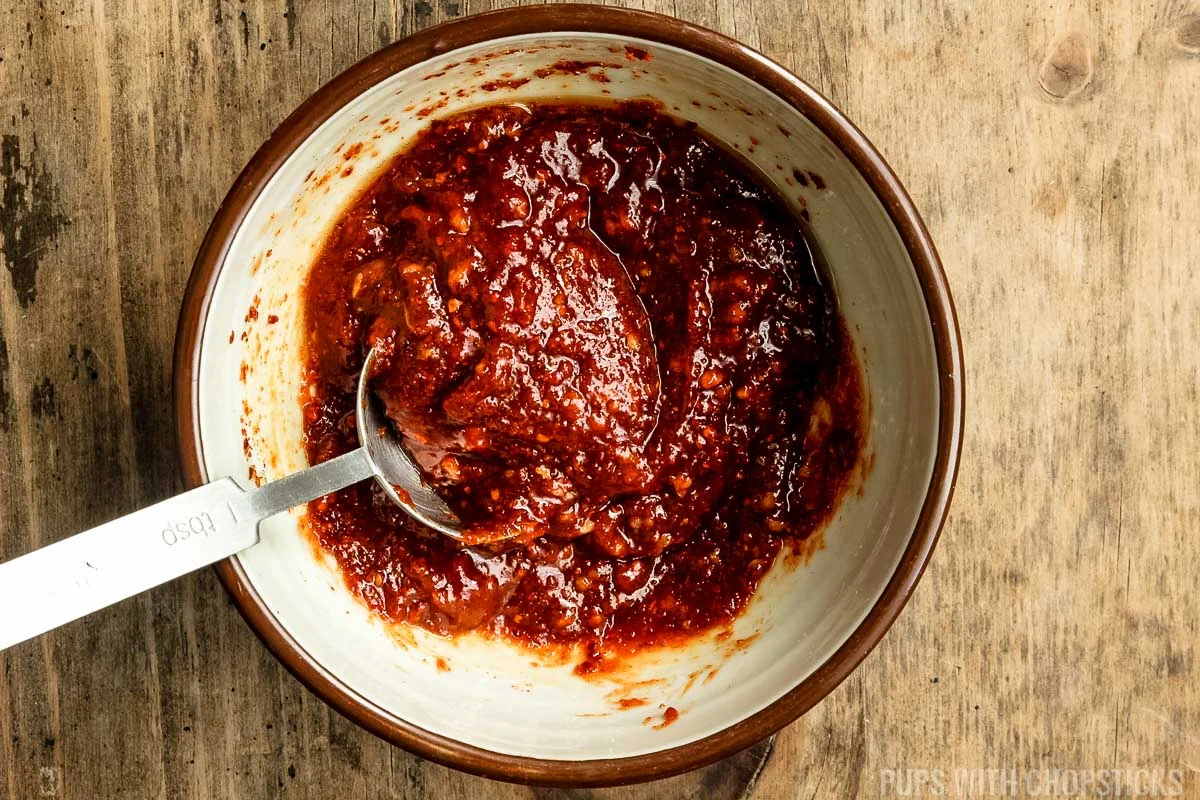
Making the Broth
Heat the Water: In a shallow pan, bring water to a boil over medium-low heat. Add the bonito flakes, and dashi powder. Simmer for about three to five minutes. If you're not using hondashi dashi powder, substitute it with two to three tablespoons of soy sauce.
Discard the Bonito Flakes: Once boiled, scoop out the bonito flakes and discard them.
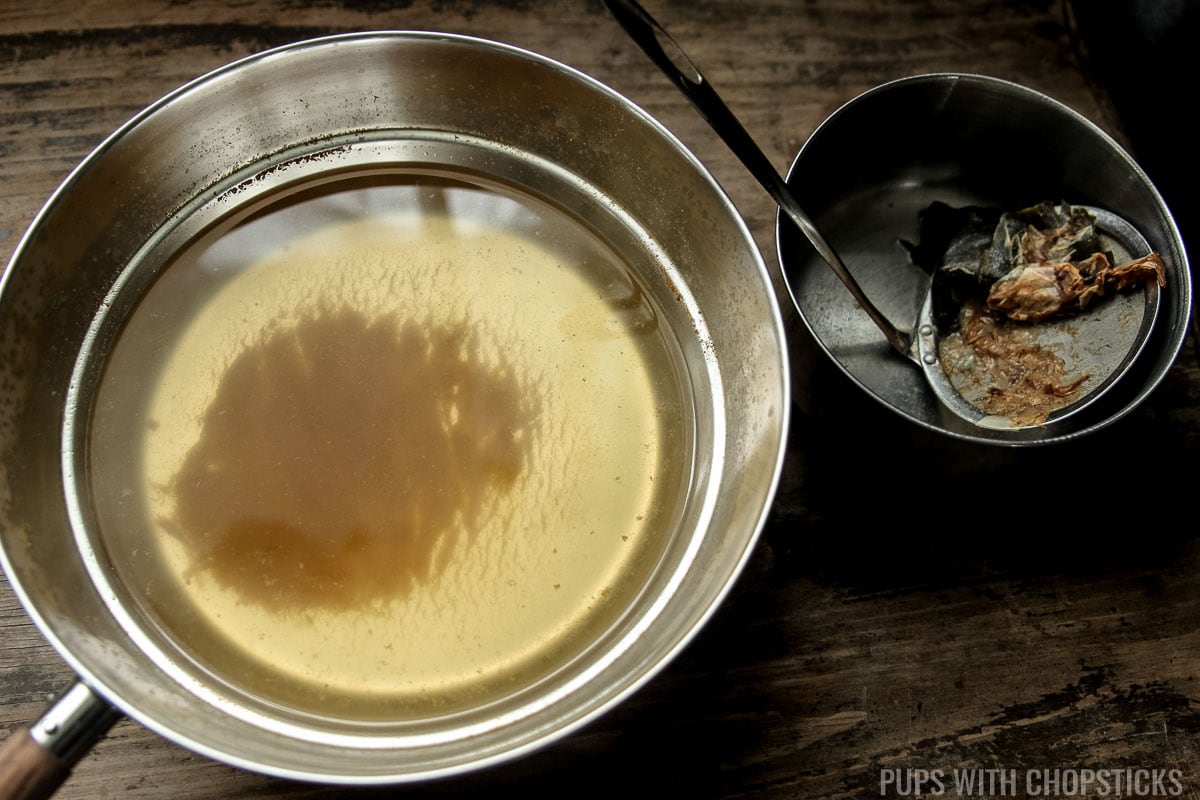
Cooking the Rabokki
Add in the Sauce, Rice Cakes and Onions: Now, add the rabokki sauce, onions, optional cabbage and carrots, and rice cakes to the pan. Cook for about six minutes, stirring frequently to prevent sticking. The sauce should start to thicken a bit. Try a rice cake - it should be soft and chewy. If it's still hard, continue cooking for a few more minutes. If you are using frozen rice cakes you may need to cook it for a minute longer.
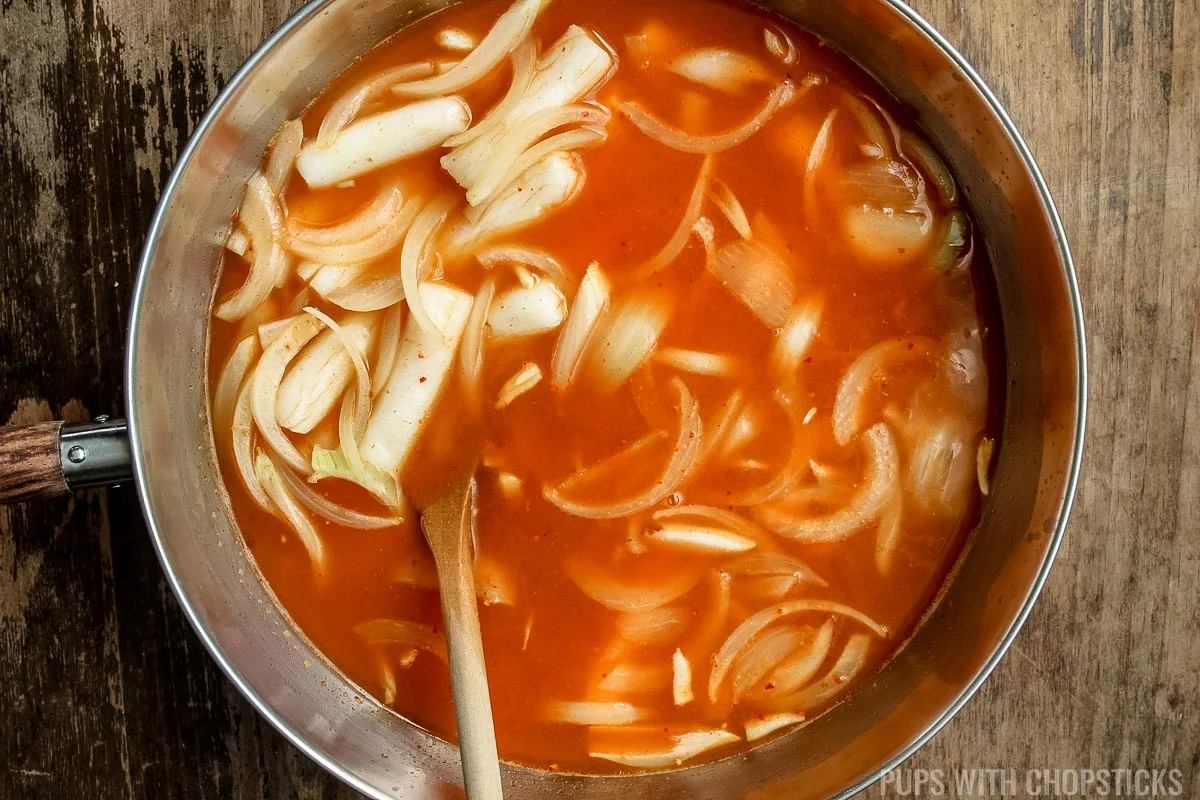
Add the Instant Ramen and Fish Cakes In: Add in the fish cake pieces and instant ramen noodles (minus the seasoning pack) and cook for another three minutes until al dente. Be careful not to overcook the noodles.
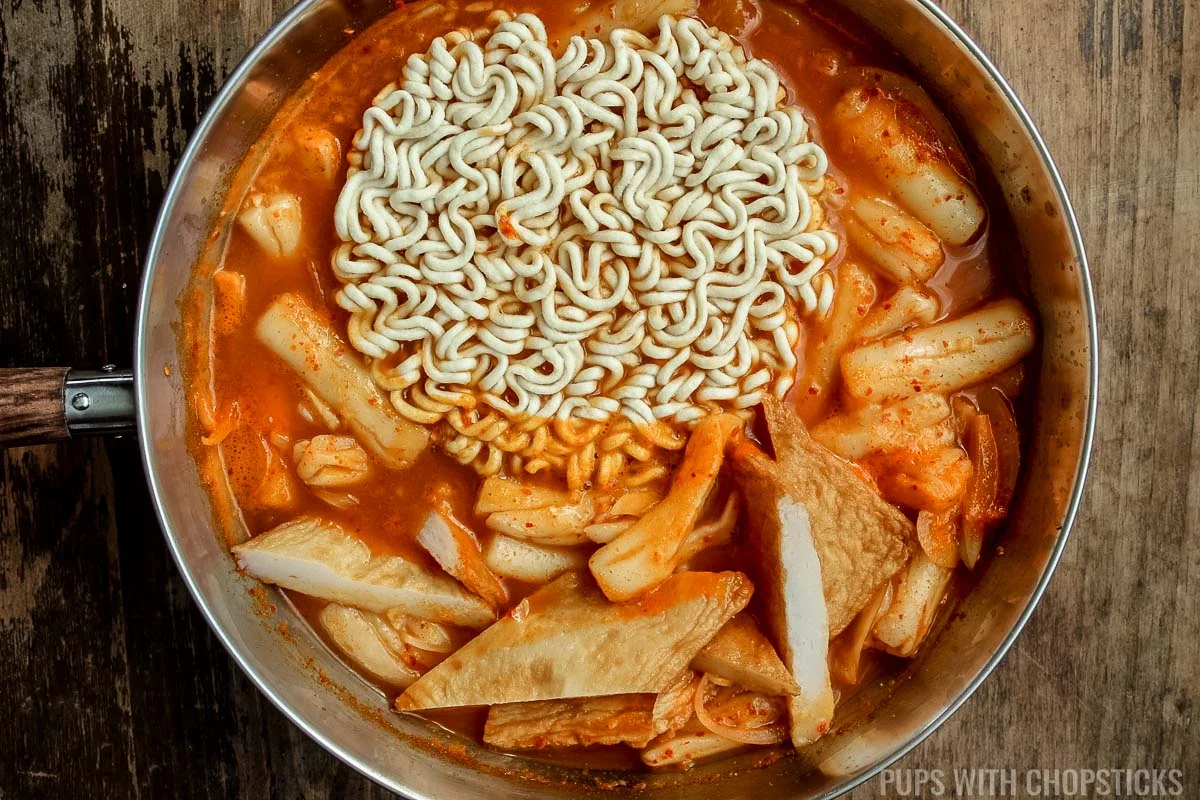
Taste and Adjust: Do a taste test and adjust the sauce to your liking.
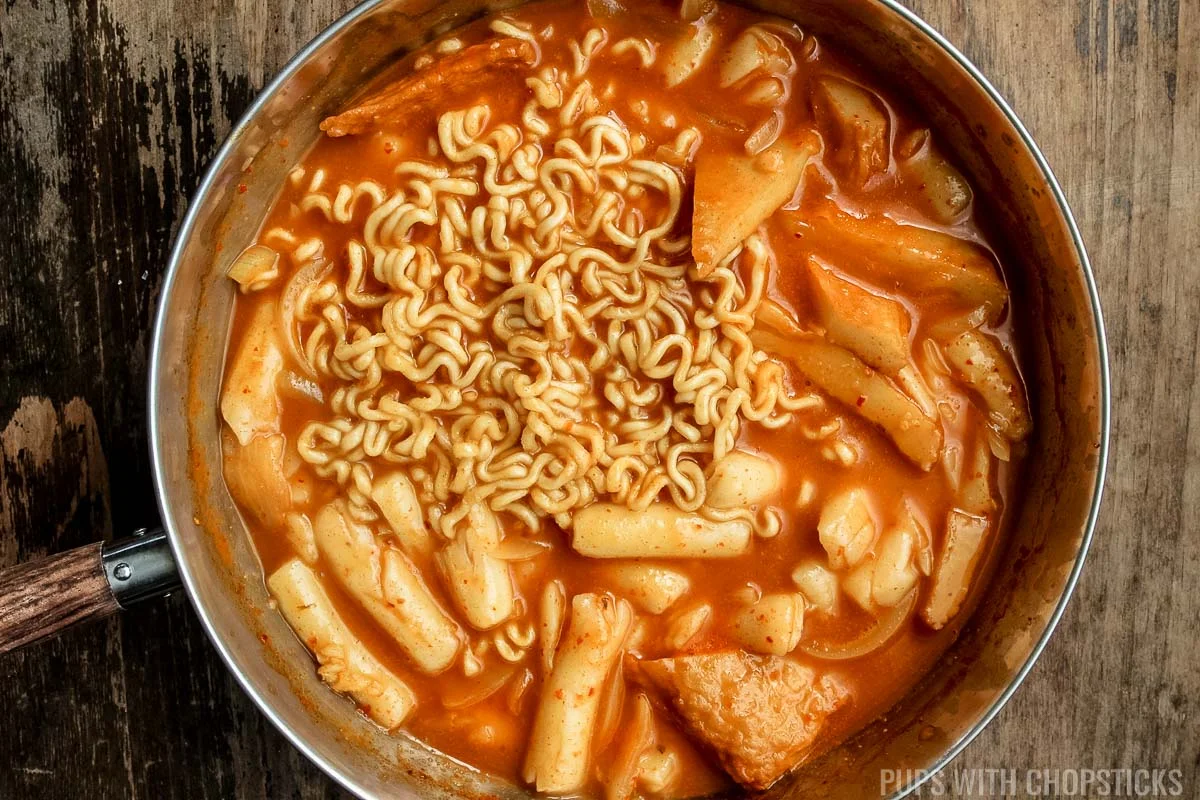
Garnish and Serve: Finally, turn off the heat and drizzle sesame oil over the dish. Garnish with toasted sesame seeds and/or green onions, and add any additional add-ins. If you're adding cheese, sprinkle it on top now so it melts.
Enjoy your homemade Rabokki!
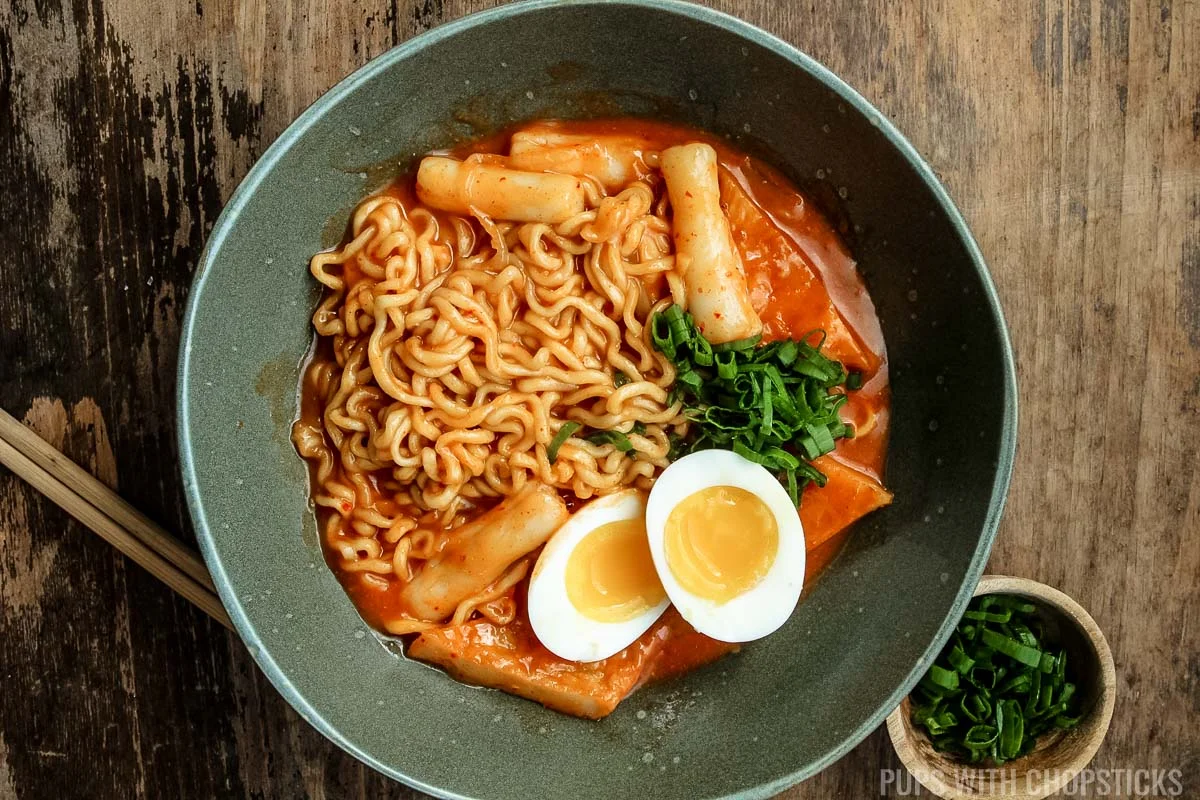
Joyce’s Tips For Making the Best Rabokki
- Don't Overcook the Instant Noodles: Ensure the instant ramen noodles are cooked al dente, which means they should still have a bit of a bite. Overcooking them will make them soggy and affect the texture of the dish. I recommend cooking them no longer than 3 minutes, if you are using a thinner variety then no longer than 2 minutes.
- Adjust the Spice Level: The heat of this dish can be customized to your taste. You can tweak the spiciness of your rabokki by adjusting the amount of gochugaru (Korean red chili pepper flakes) as follows:
- Mild = 0-1 teaspoon
- Medium = 2 teaspoons
- Spicy = 3+ teaspoons
- Hondashi Substitute: If you can't find hondashi dashi powder, you can substitute it with soy sauce or shiro dashi. However, remember that this may slightly alter the taste of your dish and you may need to add more soy sauce to make up for the saltiness.
- Keep the Rice Cakes Chewy: The texture of the Korean rice cakes (tteokbokki) is essential in this dish. Ensure they don't overcook, as they should remain soft and chewy.
- Use Fresh Rice Cakes (garaetteok): I find the rice cakes that are fresh in the fridge have a much better texture and chewier than the frozen ones. The frozen ones tend to be drier and cracked which break apart more easily while simmering which will make a thicker sauce more quickly. (like in my ingredients photo).
- Extra Rice Cakes: If you have extra rice cakes, you can store it in a ziploc bag and freeze it.
Serving Suggestions
- For a hearty meal, pair your rabokki with Korean pork bulgogi. The savory, marinated pork complements the spicy and chewy texture of the rabokki, making it a satisfying dish.
- If you're a fan of bite sized appetizers, try serving your rabokki with Korean fried popcorn turkey. The crispy, flavorful turkey (which you can sub for chicken) adds a delicious crunch that contrasts nicely with the soft Korean rice cakes in the rabokki.
- Craving for some fried chicken on the side? Make it boneless and you've got Korean fried chicken to go with your rabokki. The spice level of the rabokki and the crispy chicken create a perfect harmony of flavors.
- For snack appetizers, blistered shishito peppers or Korean corn cheese would be a great choice. The mild heat of the peppers and the creamy, sweet corn cheese balance the spicy kick of the rabokki.
- Another appetizer option is quick pickled daikon radish (Banchan) or garlic cheese baked mussels. The tangy radish and the rich mussels add depth to the overall taste of your meal.
- If you're looking for a lighter side, a Korean cucumber salad (Oi muchim) is a refreshing choice. The crisp, cool cucumber salad provides a nice contrast to the warm, spicy rabokki.
Recipe Variation Ideas for Rabokki
This delicious rabokki recipe is so flavorful and easy to make, you'll want to try out some of these delicious variations! Here are some great ideas:
- Rose Rabokki: For a rich, creamy twist on the classic Rabokki, try adding some cream to the dish. This transforms the dish into a "Rose Rabokki", a creamy and savory version you’ll love. The cream adds a velvety texture and a creamy taste to the spicy and chewy rabokki.
- Vegetarian Version: If you're vegetarian or looking to cut down on your meat intake, this variation is perfect for you. Simply omit the fish cakes and switch to vegetable stock for the broth. Add tofu and extra veggies like bell peppers, carrots, and cabbage for an additional health kick and a hearty, satisfying dish.
- Cheesy Rabokki: For all the cheese lovers, try adding some shredded mozzarella (for some serious cheese stretch) in addition to a slice of American cheese to your Rabokki. The cheese melts into the spicy sauce and creates a gooey, delicious dish that's hard to resist. It's like the ultimate Korean street food snack, but in the comfort of your own home.
- Seafood Combo: If you're a seafood lover, try replacing the fish cakes with other seafood like shrimp or squid. The seafood adds a different texture and taste to the rabokki.
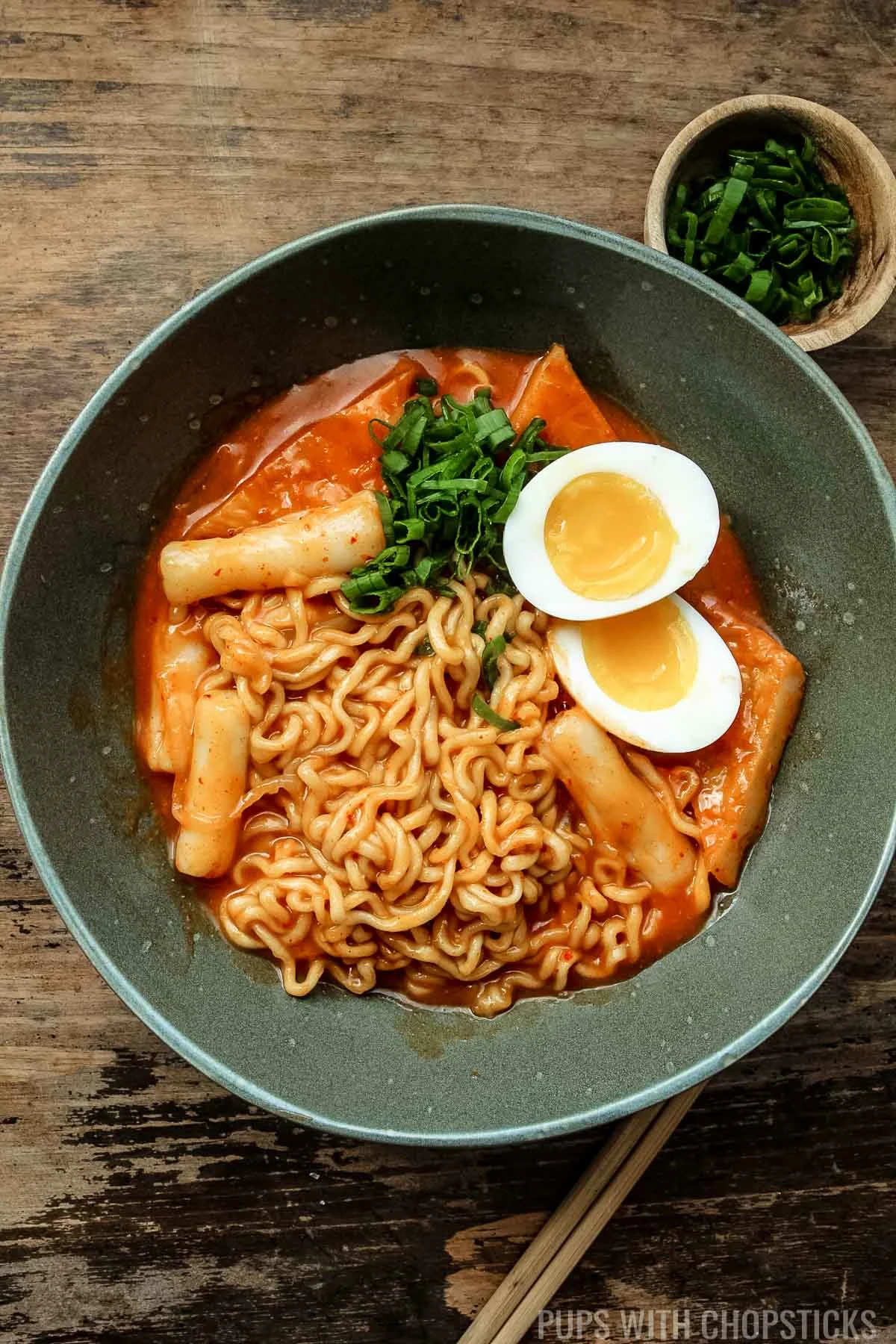
Frequently Asked Questions
If you can't find fish cakes in sheet form, you can use fish balls instead. For dashi powder, a good substitute would be chicken stock. However, you may need to adjust the soy sauce to enhance the flavor.
If you want to tweak the spiciness of this rabokki recipe, you can adjust the amount of gochugaru chili flakes. For a mild flavor, add less than a teaspoon, for medium spice use two teaspoons, and for a spicier taste, use three or more teaspoons.
Yes, you can make this dish vegetarian by omitting the fish cakes and switching to vegetable stock. You can also add tofu and veggies of your choice to the dish.
To avoid overcooking the instant ramen noodles, you should add them at the end of your cooking process and cook them for only 2-3 minutes. They will continue to soften and soak up the sauce after a few minutes.
If you can't find bonito flakes, you can omit them.
How to Store Leftover Rabokki
I highly recommend eating this fresh the day you make it because the instant noodles will get soggy overnight.
This recipe makes two servings. To make a smaller portion for just one person, you can cut all the ingredients in half (including the instant noodles) and cook it in a smaller pot, so the broth is high enough to cook the ramen.
Freezing is also not recommended for this dish. The texture of the Korean rice cakes and instant ramen noodles won't hold up well in the freezer. They're likely to become mushy upon thawing, which would ruin the delicious chewiness that is characteristic of this dish.
Recipes To Use Up Leftover Gochujang
More Korean Recipes You May Like
- Spicy Pork Bulgogi (Classic Jeyuk Bokkeum Recipe)
- Korean Corn Cheese (Elote Style)
- Kimchi Fried Rice with Spam
- Easy Tteokbokki (Korean Spicy Rice Cakes)
- Tuna Mayo Deopbap (Korean Tuna Rice Bowl)
- Easy Japchae (Korean Glass Noodles Stir Fry)
- Easy Korean Cucumber Salad (Oi Muchim)
- Easy Soondubu Jjigae Recipe (Spicy Korean Soft Tofu Stew)
If you made this rabokki recipe, I want to see! Follow Pups with Chopsticks on Instagram, snap a photo, and tag and hashtag it with @pupswithchopsticks and #pupswithchopsticks. I love to know what you are making!
Please also consider leaving a ⭐⭐⭐⭐⭐ rating and a comment to tell me how it went! I'd love to hear from you if you made this!
If you like my recipes and want to be updated on when new ones come out, please consider subscribing to my newsletter (we don't spam) and follow along on Instagram, Facebook, and Pinterest for all of my latest recipes!
Recipe Card
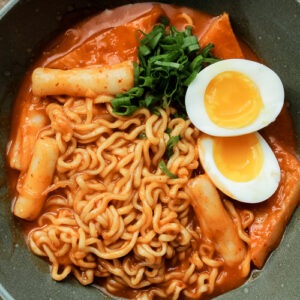
Rabokki (Ramen with Tteokbokki)
Joyce's Recipe Notes
- Gochugaru Spice Level: The heat of this dish can be customized to your taste. You can tweak the spiciness of your rabokki by adjusting the amount of gochugaru (Korean red chili pepper flakes) as follows:
- Mild = 0-1 teaspoon
- Medium = 2 teaspoons
- Spicy = 3+ teaspoons
- Extra Rice Cakes: If you have extra rice cakes, you can store it in a ziploc bag and freeze it.
- Use Fresh Rice Cakes If Possible (garaetteok): I find the rice cakes that are fresh in the fridge have a much better texture and chewier than the frozen ones. The frozen ones tend to be drier and cracked which break apart more easily while simmering which will make a thicker sauce more quickly.
- How To Make One Serving: This recipe makes two servings. To make a smaller portion for just one person, you can cut all the ingredients in half (including the instant noodles) and cook it in a smaller pot, so the broth is high enough to cook the ramen.
Ingredients
- 250 g rice cakes (garaetteok) (tubular shaped, approx. 1 cup)
- 1 package instant noodles (Korean style have the chewiest texture, Nongshim's Shin or Neoguri)
- 1 sheet fish cake (or 3-4 fish balls)
- 1 small onion (sliced, approx ½ cup)
- 1 teaspoon sesame oil (drizzled at the end)
Broth Ingredients
- 3¼ cups water
- 1½ tablespoons hondashi dashi powder (or 2 tablespoons of soy sauce, or shiro dashi)
- ½ cup bonito flakes
Rabokki Sauce
- 3 tablespoons gochujang (Korean hot pepper paste) (Korean pepper paste)
- 2 teaspoons gochugaru (Korean red pepper flakes, see notes for heat levels)
- 1 tablespoons sugar
- 2 cloves garlic (finely chopped, approx. 1 tablespoon)
Additional Add-ins (Pick 2)
- 1 cup grated carrots and finely sliced cabbage (1 cup in total)
- 1 slice American cheese slice (add on top right before eating)
- 1-2 eggs (soft or medium boiled, for 6-7 minutes)
- hot dog slices or leftover meat
- ¼ cup kimchi (roughly chopped)
Garnishes
- 1-2 stalk green onions (finely chopped)
- toasted sesame seeds
Instructions
Prepare the Ingredients
- Peel 1 small onion and slice it, set it aside for later
- Cut 1 sheet fish cake into small pieces and set aside for later
- Finely 1-2 stalk green onions and set it aside for the very end as a garnish.
- If you are using any Add-Ins (boiled eggs, kimchi, extra cheese, hot dogs, carrot or cabbage), prepare them now.
Make the Rabokki Sauce
- Finely chop or grate 2 cloves garlic and place it in a small bowl.
- In the same small bowl, add 3 tablespoons gochujang (Korean hot pepper paste), 2 teaspoons gochugaru, 1 tablespoons sugar and mix everything together. Set it aside for later.
Making the Rabokki Broth
- In a pot, bring 3¼ cups water cups of water to a simmer on medium-low heat.
- Once the water is simmering, add in ½ cup bonito flakes, and 1½ tablespoons hondashi dashi powder (or 3 tablespoons of soy sauce) and simmer for 3-5 minutes.
- Once it has finished simmering, scoop out and discard the bonito flakes.
Cooking the Rabokki
- Adjust the stove up to Medium heat.
- Add in the rabokki sauce, 250 g rice cakes (garaetteok), and sliced onions (and optional carrots and cabbage), and cook it for 6 minutes. If you are using frozen rice cakes, you will need to add an extra 1-2 minutes.Stir everything until it is well combined and stir it frequently so that the rice cakes don't stick to the bottom of the pan.
- After 6 minutes, the sauce will be thicker. Try a rice cake, it should be soft and chewy. If it is still tough, add 1 more minute and keep stirring.
- Add in 1 package instant noodles (without the seasoning pack), and sliced fish cakes (or hotdogs) and cook for another 3 minutes. If you are using thinner instant noodles, cook it for 1-2 minutes instead.
- Turn off the heat. Do a quick taste test and adjust the sauce to your liking and then drizzle 1 teaspoon sesame oil over the whole dish.
- If you are adding cheese, kimchi, or boiled egg, add it now.
- Garnish with green onions, and enjoy!
Nutrition
*Nutritional information is calculated using online tools and is an estimate*
Disclaimer: We are a participant in the Amazon Services LLC Associates Program, an affiliate advertising program designed to provide a means for us to earn fees by linking to Amazon.com and affiliated sites at no cost to you, however, I provide these links to make items easier to find if you cannot purchase this locally and I would never recommend anything I don’t own myself or highly recommend. I would prefer you to buy your items locally if possible to support your local shops (and chances are they are cheaper locally as well!)

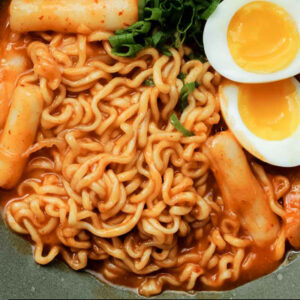
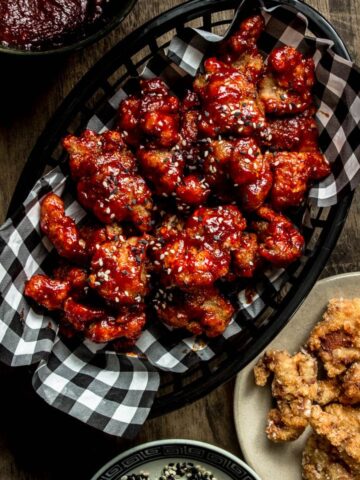
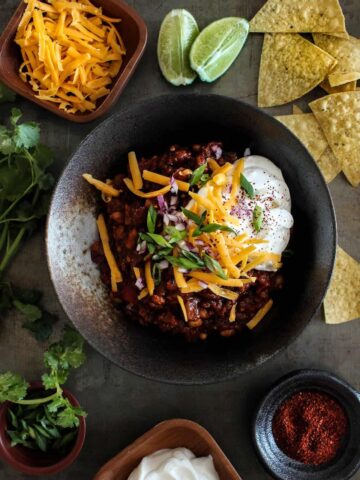
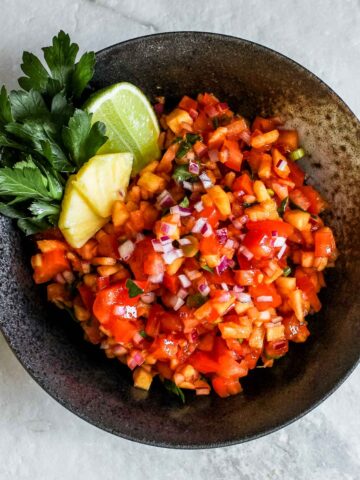
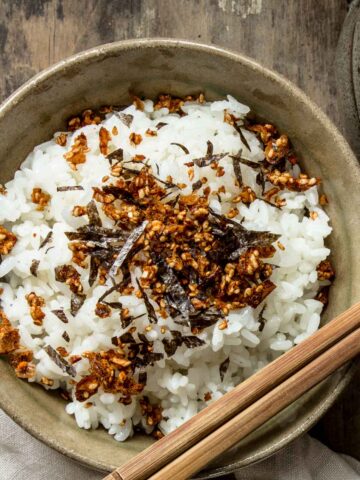
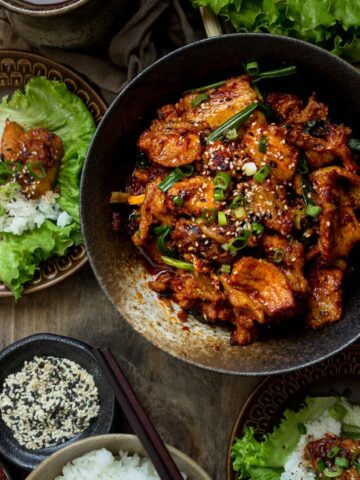
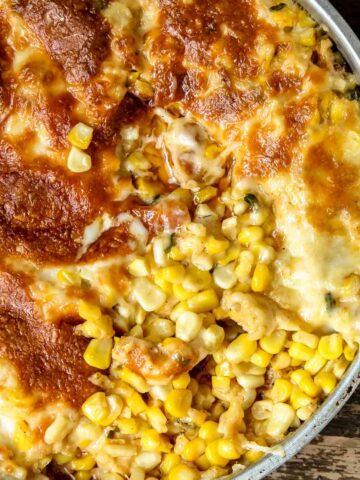
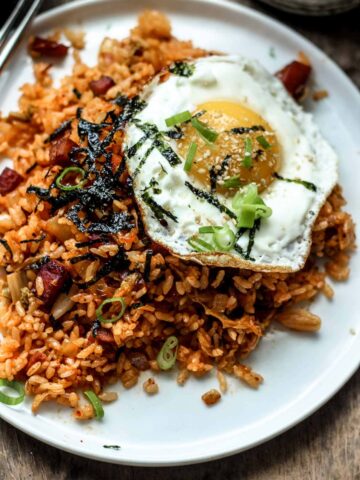

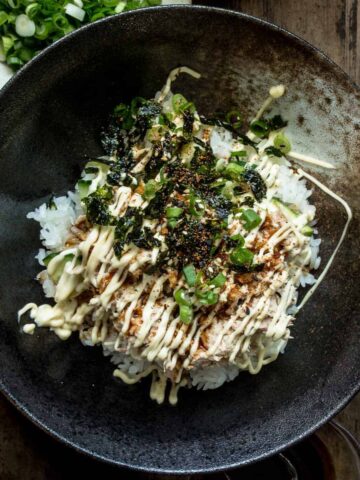
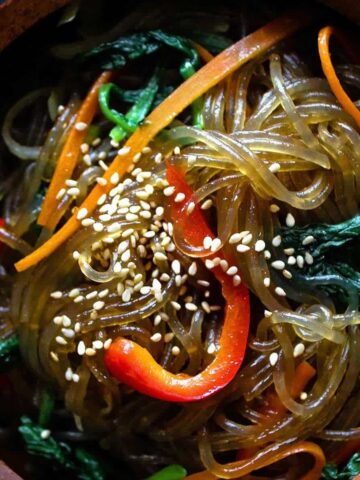
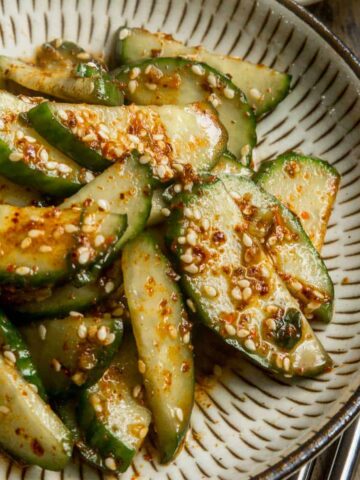
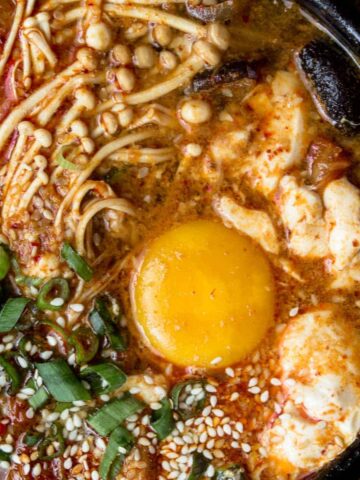
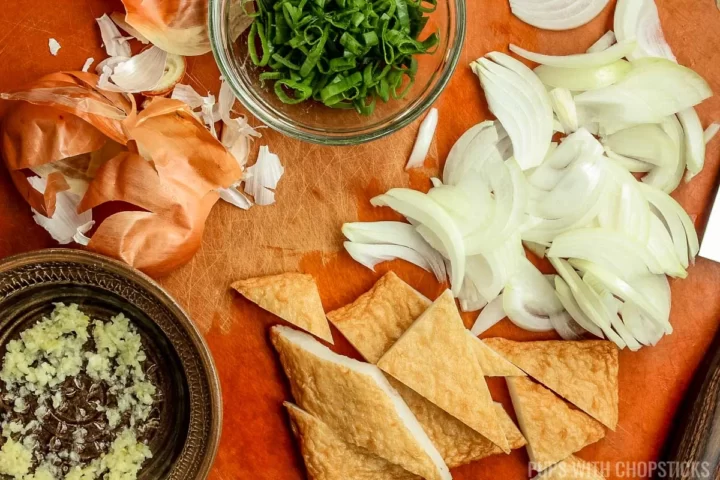
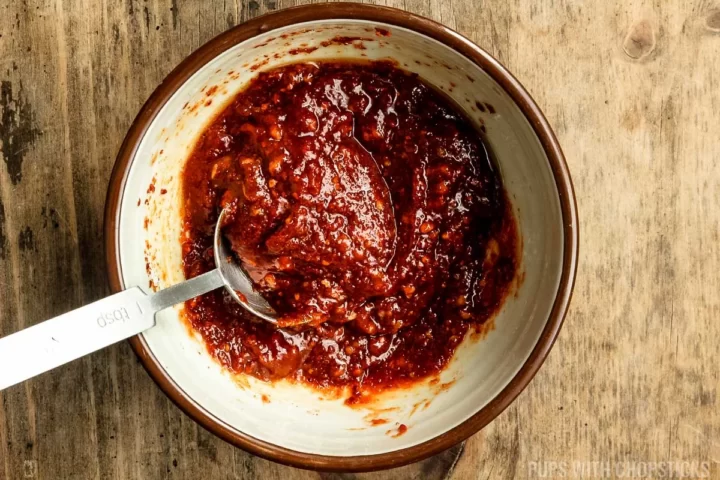
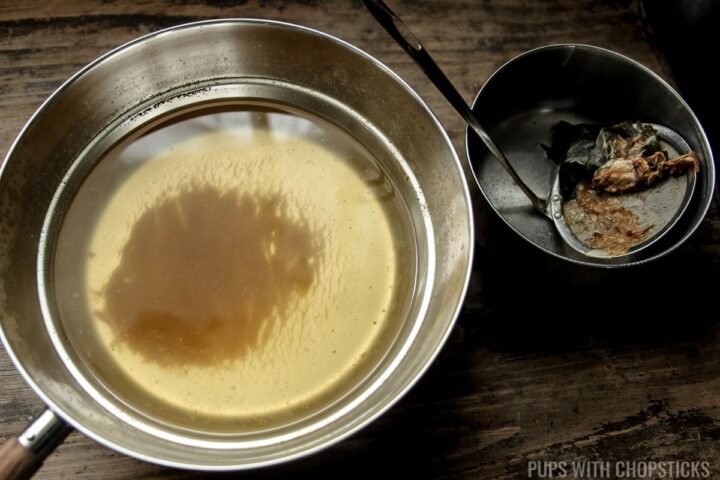
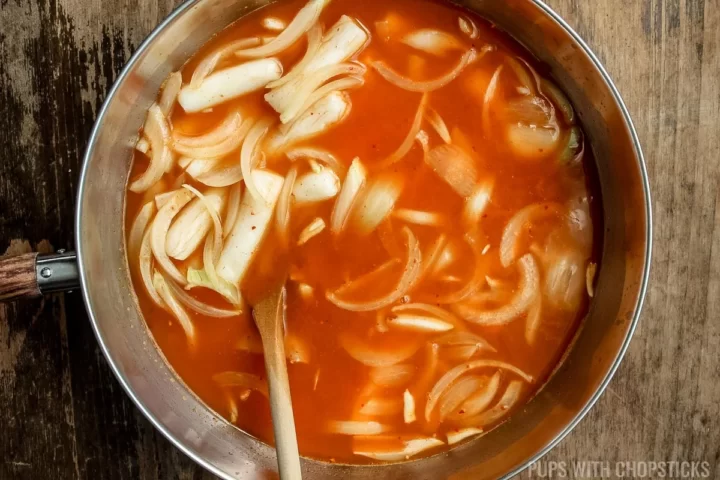
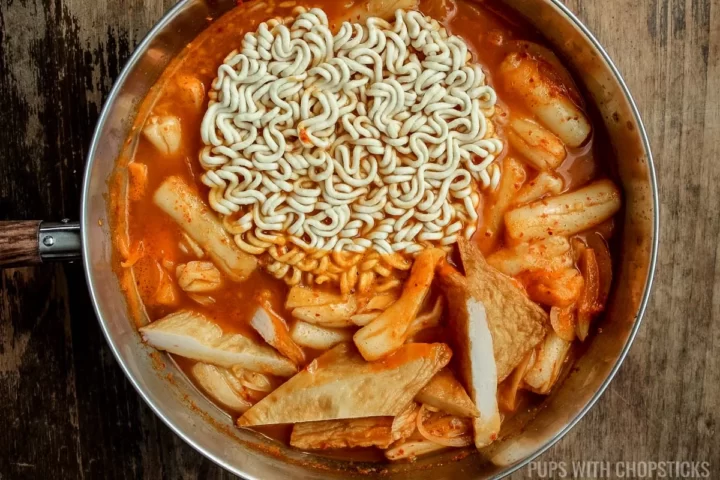
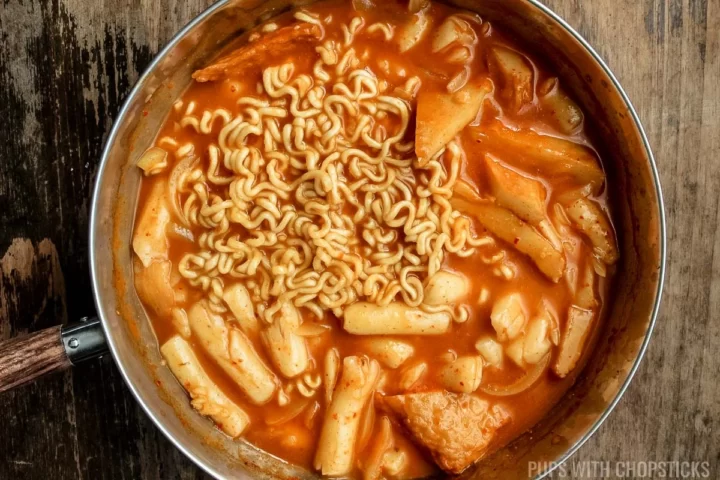
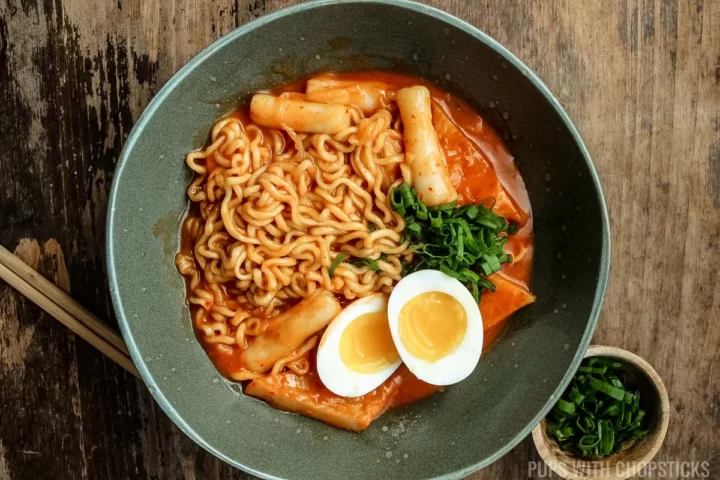
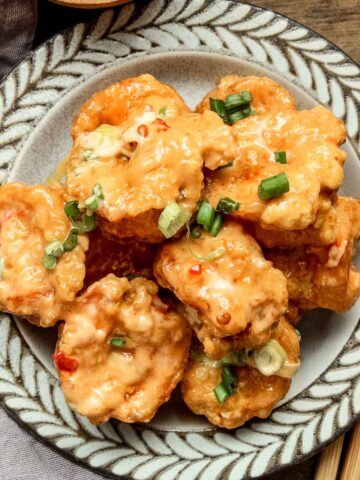
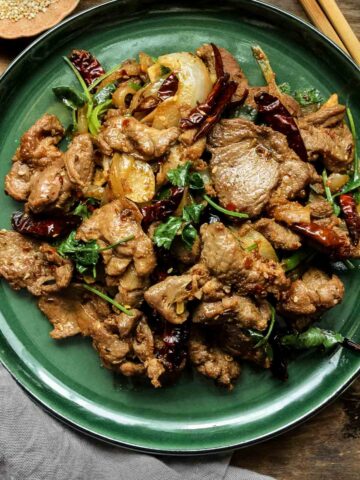
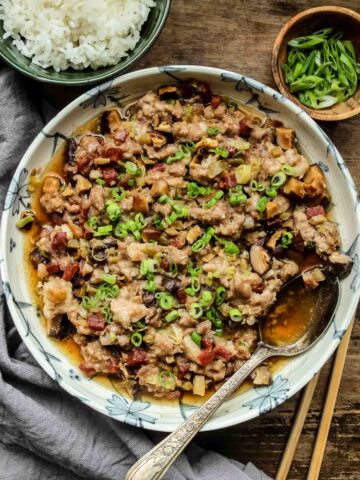
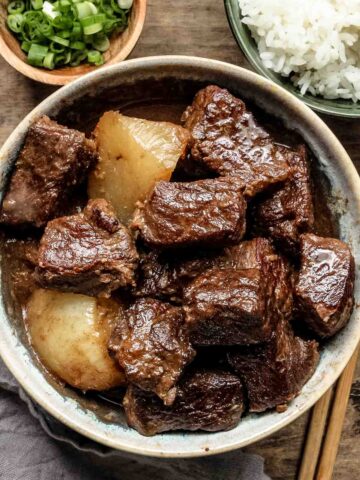
Josie says
I made this Ramen. Very delicious. I will cook this again.
Thanks for making another Ramen way
Joyce Lee says
Hi Josie!
I'm very happy to share all the cozy foods!